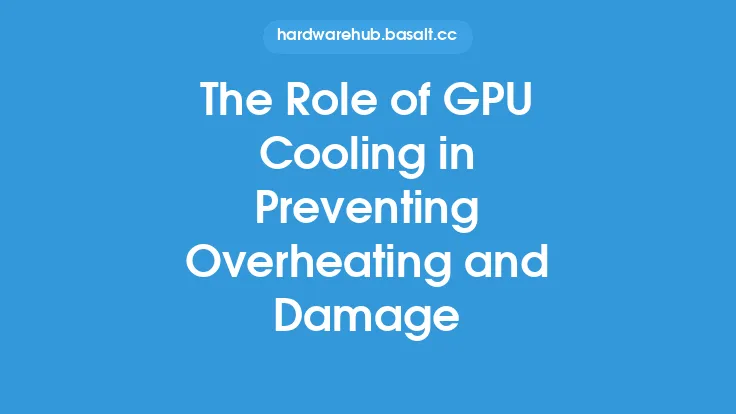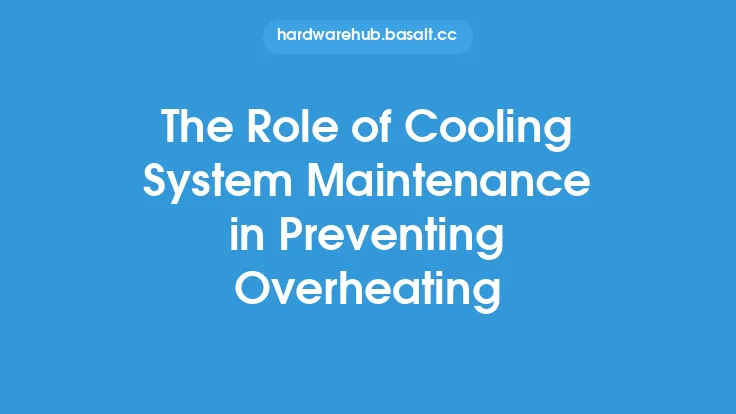When upgrading a computer, one of the most critical factors to consider is the thermal management of the system. Overheating during an upgrade can have severe consequences, ranging from reduced system performance to permanent damage to the components. It is essential to understand the risks associated with overheating and take necessary precautions to prevent it.
Causes of Overheating
Overheating during an upgrade can occur due to various reasons. One of the primary causes is the increased power consumption of the new components. For example, a more powerful graphics card or a faster processor can generate more heat than the original components. If the system's cooling system is not designed to handle the increased heat, it can lead to overheating. Additionally, poor airflow, dust buildup, and inadequate thermal interface material (TIM) can also contribute to overheating.
Effects of Overheating on Components
Overheating can have devastating effects on computer components. The most vulnerable components are the processor, graphics card, and memory modules. When these components overheat, they can suffer from reduced performance, instability, and even permanent damage. For instance, a processor that overheats can throttle its performance, leading to slower processing speeds and decreased system responsiveness. In severe cases, overheating can cause the processor to fail, requiring expensive repairs or replacement.
Thermal Management Considerations
To prevent overheating during an upgrade, it is crucial to consider the thermal management of the system. This includes ensuring that the cooling system is adequate for the new components. For example, if a more powerful graphics card is installed, a more efficient cooling system may be required to handle the increased heat. Additionally, ensuring good airflow within the case, using high-quality thermal interface material, and keeping the system clean and dust-free can help prevent overheating.
Cooling System Upgrades
In some cases, the existing cooling system may not be sufficient to handle the increased heat generated by the new components. In such cases, upgrading the cooling system may be necessary. This can include installing a more efficient air cooler, a liquid cooling system, or even a custom cooling solution. When upgrading the cooling system, it is essential to consider factors such as the cooling capacity, noise level, and compatibility with the system.
Monitoring Temperatures
Monitoring temperatures during an upgrade is critical to preventing overheating. This can be done using software tools such as CPU-Z, GPU-Z, or HWiNFO, which can provide real-time temperature readings. Additionally, many modern motherboards come with built-in temperature monitoring features that can alert the user to potential overheating issues. By monitoring temperatures, users can take proactive measures to prevent overheating, such as adjusting the cooling system or reducing the system's workload.
Best Practices for Preventing Overheating
To prevent overheating during an upgrade, users should follow best practices such as ensuring good airflow within the case, using high-quality thermal interface material, and keeping the system clean and dust-free. Additionally, users should monitor temperatures regularly and take proactive measures to prevent overheating. It is also essential to research the thermal requirements of the new components and ensure that the cooling system is adequate to handle the increased heat.
Conclusion
Overheating during an upgrade can have severe consequences, ranging from reduced system performance to permanent damage to the components. By understanding the causes of overheating, considering thermal management, and following best practices, users can prevent overheating and ensure a successful upgrade. It is essential to prioritize thermal management during an upgrade and take proactive measures to prevent overheating, ensuring that the system runs smoothly and efficiently.





